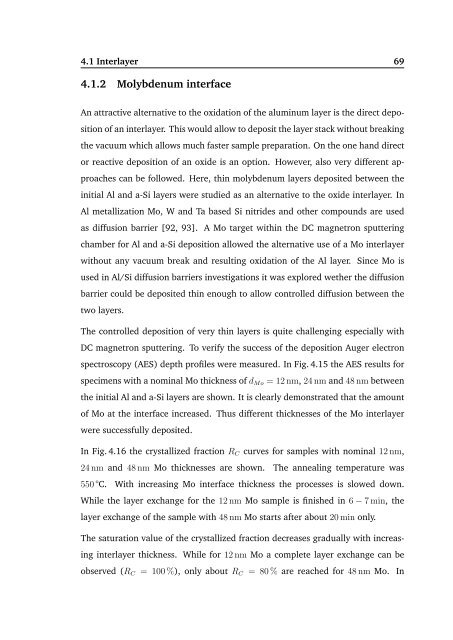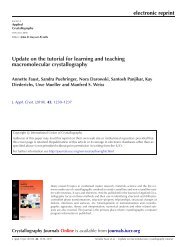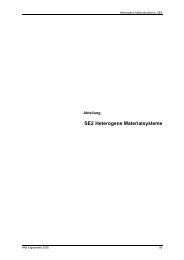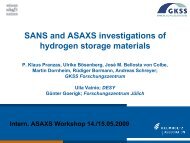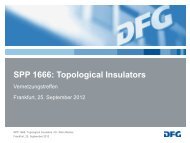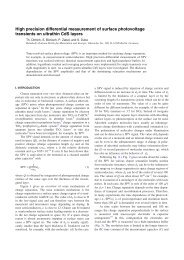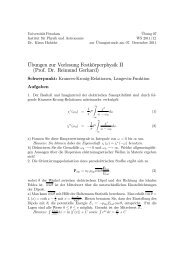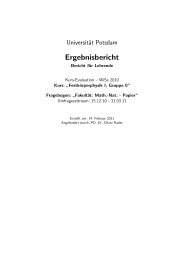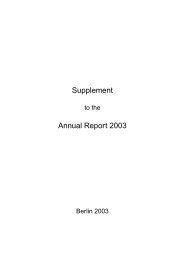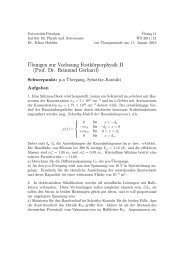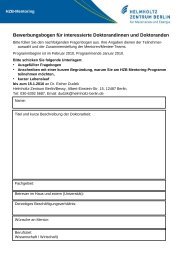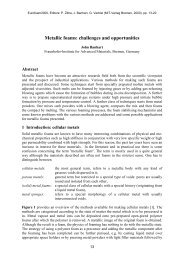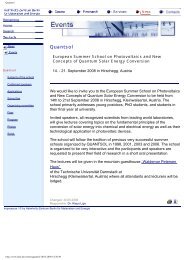(a) 100 µm - Helmholtz-Zentrum Berlin
(a) 100 µm - Helmholtz-Zentrum Berlin
(a) 100 µm - Helmholtz-Zentrum Berlin
You also want an ePaper? Increase the reach of your titles
YUMPU automatically turns print PDFs into web optimized ePapers that Google loves.
4.1 Interlayer 69<br />
4.1.2 Molybdenum interface<br />
An attractive alternative to the oxidation of the aluminum layer is the direct depo-<br />
sition of an interlayer. This would allow to deposit the layer stack without breaking<br />
the vacuum which allows much faster sample preparation. On the one hand direct<br />
or reactive deposition of an oxide is an option. However, also very different ap-<br />
proaches can be followed. Here, thin molybdenum layers deposited between the<br />
initial Al and a-Si layers were studied as an alternative to the oxide interlayer. In<br />
Al metallization Mo, W and Ta based Si nitrides and other compounds are used<br />
as diffusion barrier [92, 93]. A Mo target within the DC magnetron sputtering<br />
chamber for Al and a-Si deposition allowed the alternative use of a Mo interlayer<br />
without any vacuum break and resulting oxidation of the Al layer. Since Mo is<br />
used in Al/Si diffusion barriers investigations it was explored wether the diffusion<br />
barrier could be deposited thin enough to allow controlled diffusion between the<br />
two layers.<br />
The controlled deposition of very thin layers is quite challenging especially with<br />
DC magnetron sputtering. To verify the success of the deposition Auger electron<br />
spectroscopy (AES) depth profiles were measured. In Fig. 4.15 the AES results for<br />
specimens with a nominal Mo thickness of dMo = 12 nm, 24 nm and 48 nm between<br />
the initial Al and a-Si layers are shown. It is clearly demonstrated that the amount<br />
of Mo at the interface increased. Thus different thicknesses of the Mo interlayer<br />
were successfully deposited.<br />
In Fig. 4.16 the crystallized fraction RC curves for samples with nominal 12 nm,<br />
24 nm and 48 nm Mo thicknesses are shown. The annealing temperature was<br />
550 °C. With increasing Mo interface thickness the processes is slowed down.<br />
While the layer exchange for the 12 nm Mo sample is finished in 6 − 7 min, the<br />
layer exchange of the sample with 48 nm Mo starts after about 20 min only.<br />
The saturation value of the crystallized fraction decreases gradually with increas-<br />
ing interlayer thickness. While for 12 nm Mo a complete layer exchange can be<br />
observed (RC = <strong>100</strong> %), only about RC = 80 % are reached for 48 nm Mo. In


